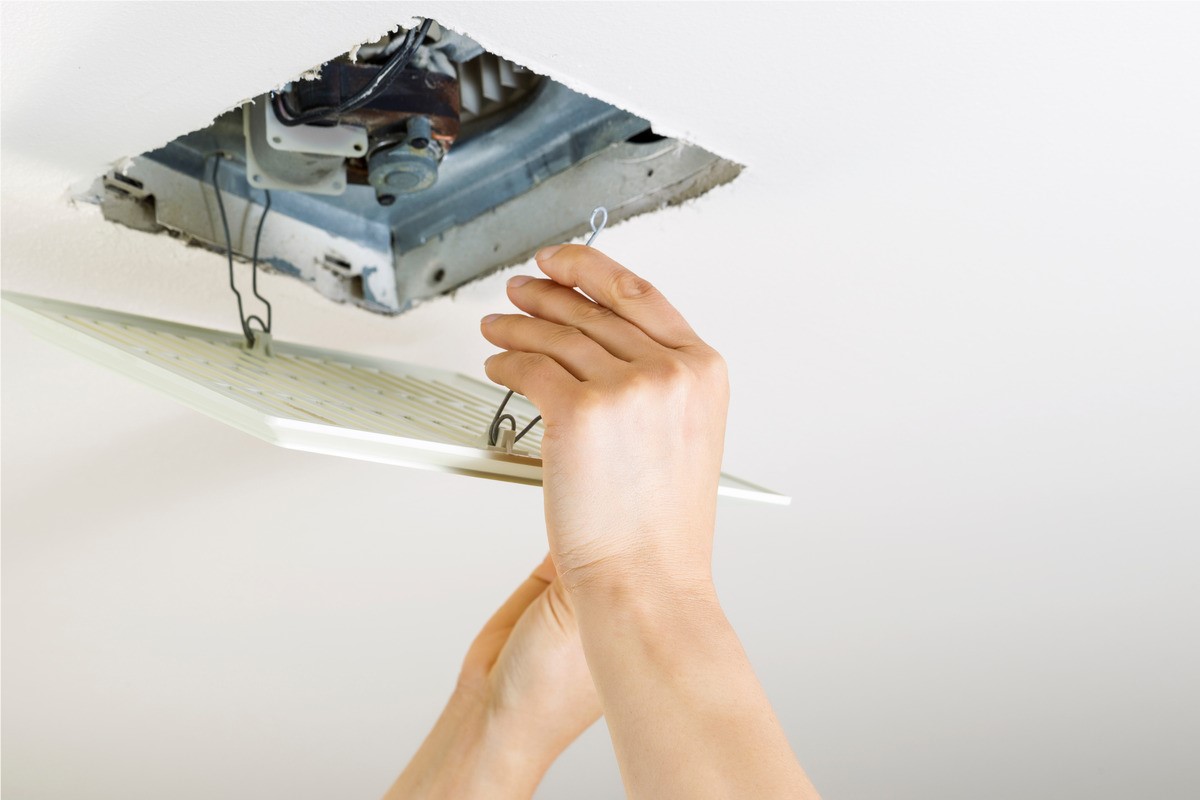
Here at Kearns Brothers, we've encountered our fair share of bathroom exhaust challenges – a common issue that many homeowners face. We understand it, and we're here to help you navigate through it. Some of the problems we tackle stem from myths about attic ventilation and the tricky path that hot, humid bathroom air needs to take. Trust us; ignoring these issues can lead to major headaches down the road.
In today's blog post, we want to share some insights with you. Kearns Brothers is here to guide you on the right path for exhaust fan ventilation placement and, just as importantly, where you absolutely shouldn't vent. Let's dive into the nitty-gritty of proper ventilation to keep your home in tip-top shape.
Top Reasons Not to Vent Your Bathroom into The Attic
Let's explore a common bathroom venting mistake – channeling that roof vent straight into the attic. It's like hosting a party for problems you never intended to invite. You see, the attic does its job by ushering out warm, moist air and inviting in cooler air. However, toss in the hot and humid air from your bathroom, and suddenly, you've created the perfect breeding ground for excess moisture.
So, why is excess moisture such a red flag? Well, it practically rolls out the red carpet for mold and mildew, turning your home into their VIP section. If you're lucky, dealing with mold might be a solo act in your crawl space. Yet, in more serious cases, it could lead to unwanted guests like roof leaks, the crumbling of your roof sheathing, and even pose health risks.
Your sheathing, usually crafted from plywood or OSB, becomes a drama queen when exposed to prolonged high moisture levels – think delamination, buckling, and rot. In a nutshell, rerouting your bathroom vent into the attic isn't a smart move. It's a recipe for potential problems that can crash the party of your home's integrity and your well-being. Stay wise, and let's keep that bathroom venting drama-free!
So, Where Should I Vent My Bathroom Exhaust Fan?
Ensuring your bathroom exhaust fan vents directly through the roof is vital for maximizing your home's performance. It plays a key role in effectively removing excess moisture from your attic space – an aspect of utmost importance.
To achieve this, redirect or install duct pipes from the fan, guiding them toward an exterior vent on the roof. This not only guarantees efficient ventilation but also creates a designated exit for moisture, preventing it from lingering in your attic.
Balancing Sound Levels in Exhaust Fans
Let's face it – when it comes to bathroom time, we all yearn for a serene experience. Maybe you reach for your favorite sports magazine or scroll through your phone; the goal is peace. However, that tranquility can be abruptly disrupted when the exhaust fan roars to life, sounding like an airplane gearing up for takeoff. The bathroom is your escape from noise, not an addition to it. But don’t worry – we've got some handy tips!
Bathroom exhaust fans are assessed in "sones," a unit gauging how the human ear interprets sound. For perspective, a gentle hum like a refrigerator typically rates at one sone. Here's the intriguing part: each additional sone doubles the sound level, making two sones twice the volume.
For a serene bathroom experience, choose a fan with a sone rating of two or below. Fans rated at three or four sones may introduce more noticeable white noise. It's advisable to avoid fans rated at five or higher for a quieter ambiance. After all, the bathroom should be your haven, not a concert hall!
How To Properly Size a Bathroom Exhaust Fan
Choosing the ideal bathroom exhaust fan for your home is akin to finding the perfect pair of shoes – it's all about getting the right size. In this scenario, the size of your bathroom takes center stage, determining how effectively your exhaust fan can bid farewell to hot and humid air.
For peak performance, aim for a minimum of 1 CFM (cubic foot per minute) of ventilation for every square foot of your bathroom. Size matters – an undersized fan won't effectively whisk away that steamy air. Ensure you've got the right match.
For smaller spaces, a minimum of 50 CFM will suffice. However, if you're dealing with a spacious bathroom, consider teaming up with multiple exhaust fans for a dynamic ventilation duo. It's all about pinpointing that sweet spot to keep your bathroom feeling fresh and fabulous.
Ensuring Proper Installation from the Best There Is
If you have concerns about the effectiveness of your ventilation or duct system, don't hesitate to reach out to our experienced professionals. Ignoring potential issues can escalate a simple cleanup into a major roof replacement, resulting in substantial costs.
Why take the risk? With over 30 years of experience, you can trust our expertise to identify and address any ventilation concerns promptly. What’s better than a roof estimate? A free roof estimate! Give us a call today to schedule your free inspection and gain peace of mind for your home.
Tags
Subscribe to Kearns Brothers's Blog



Comments